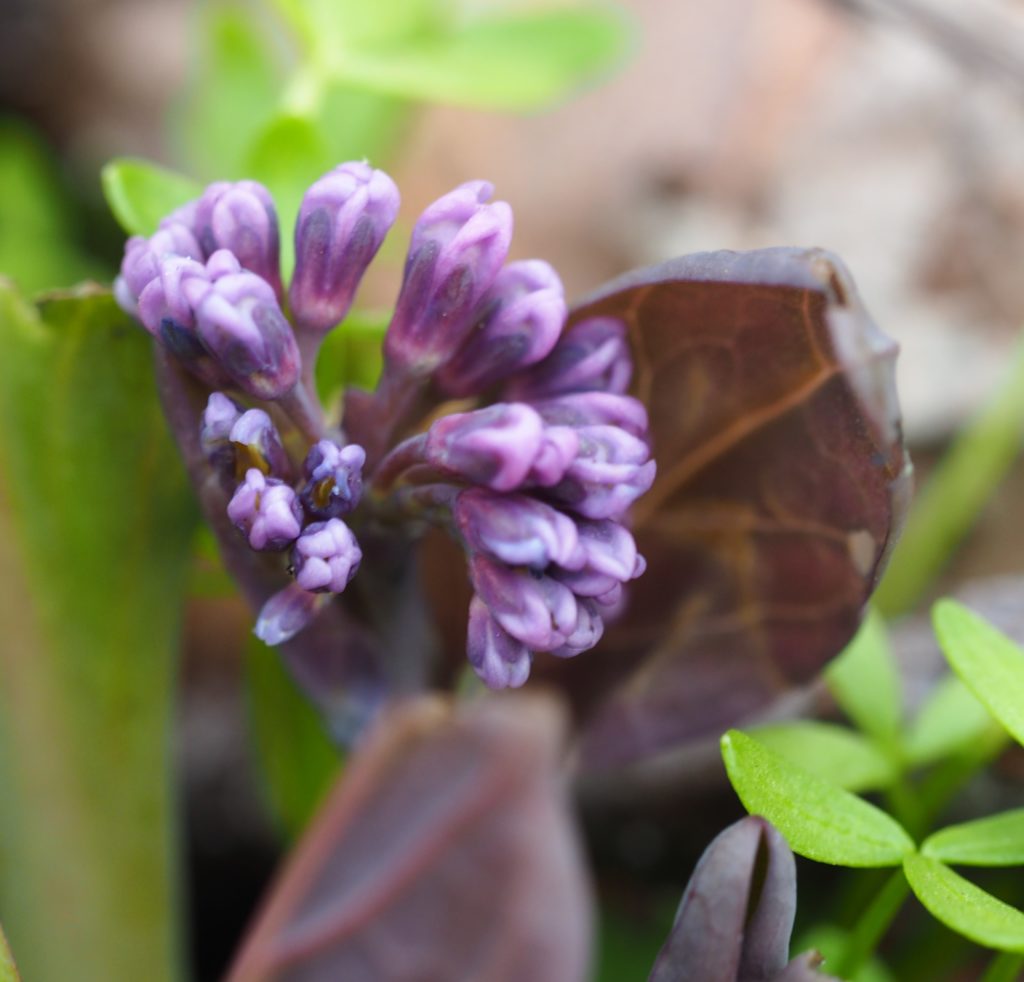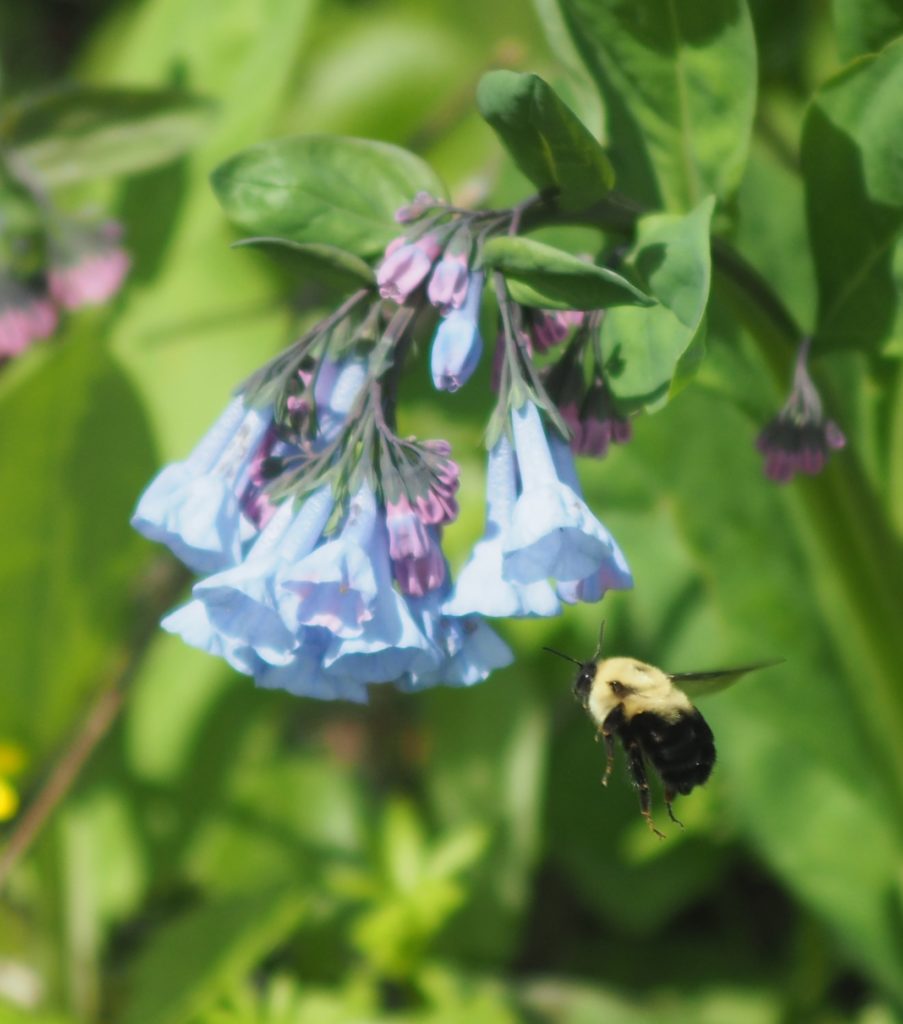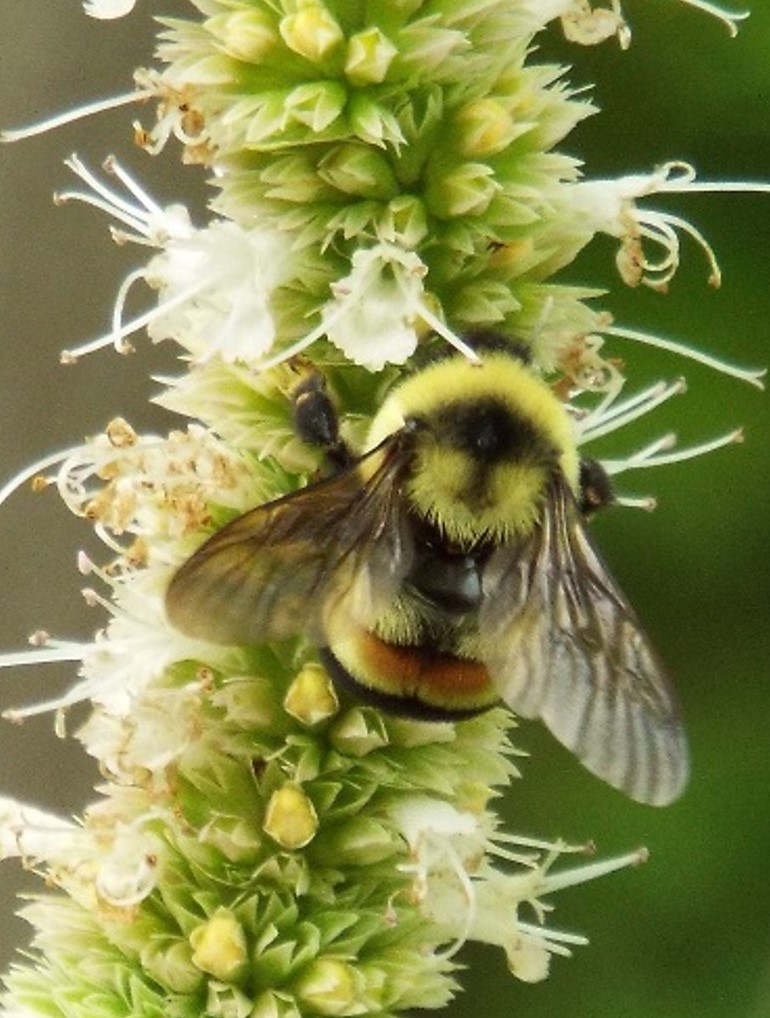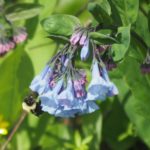Bluebells and the Bumble Bee Brigade
By Brooke Gilley

The blooming of Virginia bluebells marks the busy season for bumble bee queens and the beginning of monitoring season for the Bumble Bee Brigade. Bumble bee queens have been hibernating underground, waiting for the soil to warm up so they can start to gather the nectar and pollen needed to lay the eggs that will form their colony. It is thought that bumble bee queens will create hibernaculum close to spring ephemerals, so they have easier access in the spring. Bluebells are some of our earliest flowers to bloom in the spring. That’s why the bluebells are so important and, appropriately, why the Bumble Bee Brigade springs into action (pun intended) when we see them bloom.
While they are cold blooded, the furry body of a bumble bees is thought to insulate their bodies. Therefore, they can often forage for pollen and nectar at cooler temps. Bumble bees have been known to forage at temps near freezing but are typically active in temperatures ranging closer to 59 degrees to 86 degrees Fahrenheit
The Bumble Bee Brigade is a team of community science monitors organized by the Department of Natural Resources to gather important information about the life of bumble bees. Our job is to take photos, lots and lots of photos, of the bumble bees we see. We never handle the bees but try to identify species and if our bumble bee is a worker, a male, or queen bee (in the fall the queens are called gynes). We then submit these photos to the Bumble Bee Brigade.

Not all bumble bees are the same. Did you know Wisconsin has 20 different species? Five of those 20 bumble bees are Cuckoo Bumble Bees which means they don’t make a colony of their own but will take over one from another species of bumble bee. Some of our more common species that you are most likely to see in your backyard are the Common Eastern, Two-Spotted, Brown-belted, and Red-belted bumble bees. Species identification is determined by where the yellow or even rust color is seen on the body.
In Wisconsin, we have one federally endangered species called the Rusty Patched Bumble Bee. Seven species could be next on that list as well as three others that need more research to determine their status. One species of concern that we have within our Milwaukee County Park System is the Yellow Bumble Bee.

There are still a lot of unknowns about the life history of bumble bees and what is causing the decline. One of those reasons is that other bee species in general are not studied as deeply our friend the honey bee. We hear a lot about honey bees but bumble bees are just as important in the pollination of fruits and vegetables and can provide buzz pollination which honey bees can’t do. You see, some plants really hold on to their pollen. Bumble bees and some other bee species have a way to get this precious pollen. They will firmly grasp the anthers (the part of the flower that holds pollen) and move their flight muscles rapidly. This causes the flower and anthers to vibrate, thus dislodging the pollen.
I have been monitoring bumble bees as a team member in the Bumble Bee Brigade since 2018 and I would like to encourage anyone fascinated by our friends, the bumble bees, to join us in this effort. If you would like to help by becoming a bumble bee monitor, please consider joining our Milwaukee County Parks Natural Areas Department as a volunteer. Bring your camera, watch for the blooming of the bluebells, and listen for the hum of bumble bee wings to help protect these amazing and vital natural neighbors.
Ready to get started monitoring bumble bees? Take the virtual training by watching these Milwaukee County Parks Bumble Bee Monitoring Program Orientation and Bumble Bee ID Tutorial. Submit observations to the Wisconsin Bumble Bee Brigade for Milwaukee County Parks here.
Questions? Contact Milwaukee County Parks Natural Areas Specialist Emilie Burmeister.


Very nice article, Brooke. Very well written and most interesting. Having never heard of such and organization to monitor the bumble bees, you have my interest. Good job! I only thought there was only one type of bumble bee (those big , fat scary looking bees).